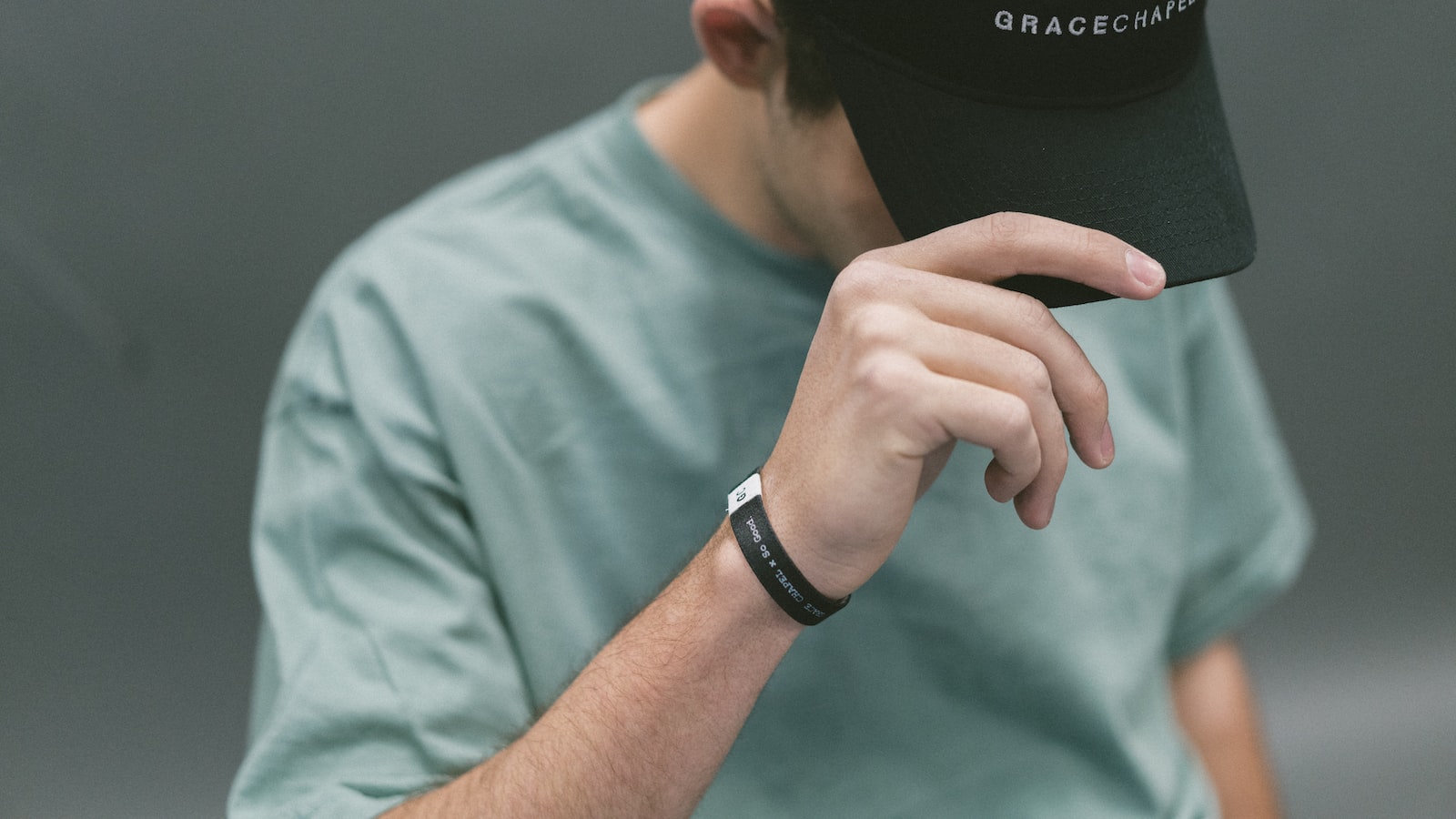Does Wearing A Hat Cause Dandruff

Wearing a hat has long been seen as a fashion choice, but it can also have an impact on the health of your scalp. While hats can help protect your head from the elements, some people find that wearing a hat can cause an increase in dandruff. In this article we will explore what causes dandruff and how wearing a hat may play a role in causing this condition. We will also discuss ways to minimize the risk of developing dandruff if you choose to wear a hat.No, wearing a hat does not cause dandruff. Dandruff is caused by a fungus that lives on the scalp, and it can be aggravated by certain environmental factors like oily skin, infrequent shampooing, or cold, dry weather. Wearing a hat can make the scalp sweatier and oilier than usual, which can contribute to the severity of dandruff symptoms. However, wearing a hat does not directly cause dandruff.
What is Dandruff?
Dandruff is a common scalp condition which causes white flakes of dead skin to appear in the hair and on the shoulders. It can also cause an itchy, irritated scalp. In some cases, it can even lead to redness and inflammation. Generally, dandruff is caused by an overgrowth of yeast on the scalp, which can be triggered by a number of factors such as stress, hormonal changes, and even certain types of shampoo. While dandruff is not dangerous or contagious, it can be embarrassing and uncomfortable.
The good news is that there are several treatments available for dandruff. The most common treatment option is an anti-dandruff shampoo which helps to reduce the number of yeast on the scalp and also helps to reduce itching and irritation. Other treatments include topical creams or ointments that can help to soothe the scalp and reduce redness and inflammation. If these treatments don’t seem to be working or if your symptoms become worse over time, you should speak to your doctor as they may be able to prescribe stronger medications or suggest other alternatives.
What Causes Dandruff?
Dandruff is an extremely common scalp condition that affects a large portion of the population. It is characterized by flaking of the scalp, itching, and sometimes even redness and irritation. While it may seem like an unsightly problem, it can actually be quite embarrassing for those who suffer from it. Fortunately, understanding what causes dandruff can help prevent or reduce its occurrence.
The most common cause of dandruff is a type of fungus called Malassezia, which feeds on the oils in our scalp and produces irritating byproducts. This can lead to an overgrowth of skin cells on the scalp, resulting in flakes of skin that come off when we scratch or brush our hair. Other potential causes include dry skin, sensitivity to certain types of shampoos or hair products, and even stress and dietary changes.
In addition to these causes, there are some lifestyle choices that can make dandruff worse. Wearing hats or using harsh styling products can aggravate the scalp and contribute to flaking. Not shampooing regularly enough can also be an issue; if oils build up on the scalp they can cause Malassezia to overgrow as well as turn into flakes when we scratch our head.
Fortunately, there are many ways to help treat dandruff and prevent its recurrence. A good start is switching to a mild shampoo specifically designed for dandruff control; these products often contain ingredients that help fight off the fungus that causes it in the first place. Additionally, it is important to keep your scalp moisturized with regular conditioning treatments; this will help reduce itchiness and irritation as well as help reduce flaking due to dryness. Finally, reducing stress levels may also be helpful in preventing flare-ups; stress has been linked with increased instances of dandruff so managing stress may help reduce its occurrence over time.
How Does Wearing a Hat Affect the Scalp?
Wearing a hat can have both positive and negative effects on the scalp. On one hand, hats can protect the scalp from harmful UV rays, wind, dust, and dirt. This can help to reduce irritation, inflammation, and dryness. On the other hand, hats can cause excessive sweating and cause the scalp to become overly moist. This can lead to fungal or bacterial infections on the scalp.
When wearing a hat for long periods of time, it is important to ensure that it fits correctly and that it is not too tight or too loose. Tight-fitting hats can cause hair loss due to traction alopecia by pulling on the hair follicles over time. Loose-fitting hats can also be problematic as they may not provide enough protection from environmental factors such as wind or sun exposure.
It is also important to ensure that hats are washed regularly in order to keep them clean and free of bacteria or fungi which may be transferred onto the scalp if left unwashed. Sweat from extended wear of a hat should also be cleaned off of the head in order to reduce potential irritation or infection of the scalp.
In general, wearing a hat is not bad for your scalp health but it is important to ensure that you are taking proper care of your headwear and your scalp in order to maintain healthy skin and hair.
Common Types of Hats
Hats are one of the oldest and most recognizable forms of headwear. They have been used for centuries to express style, to keep warm, and even to make a statement. While there are countless styles of hats available today, there are some common types that are seen often. These include baseball caps, fedoras, beanies, sun hats, cowboy hats, and top hats.
Baseball caps are typically made out of cotton or polyester and feature a curved brim with an adjustable strap in the back. They come in a variety of colors and designs and can be worn by men, women, and children alike. They are popular with sports teams and can be seen at nearly any sporting event or gathering.
Fedoras are classic hats with a wide brim that is usually made from felt or straw. They were traditionally worn by men but now can be seen on people of all genders. They come in a variety of colors and add an instant touch of style to any outfit.
Beanies are soft knit caps that usually cover the entire head and ears for extra warmth. They can be found in virtually any color or design imaginable and can easily be dressed up or down depending on the occasion.
Sun hats are designed to protect the wearer’s face from harmful UV rays while still looking stylish. These lightweight hats come in many shapes and sizes including floppy brimmed styles, wide-brimmed styles, bucket styles, and visors.
Cowboy hats have become synonymous with western culture due to their prevalence among cowboys in the past century. These iconic hats feature a wide brim with a tall crown that often has an ornamental band around it as well as air holes for ventilation.
Top hats were originally worn by upper-class men during the 18th century but now they can also be seen during certain formal events like weddings or proms. The tall cylindrical shape gives them an instantly recognizable look that adds sophistication to any look.

Is There Any Scientific Evidence About Wearing a Hat and Dandruff?
There is some evidence that suggests wearing a hat can contribute to dandruff. In a study conducted by researchers at the University of California, San Diego, it was found that wearing a hat can increase the amount of sweat and oil produced on the scalp, which can lead to an increased risk of developing dandruff. The heat generated from wearing a hat can also cause sweat glands to become more active, resulting in more oil production on the scalp. This increased oil production can clog hair follicles and lead to dandruff.
In addition, hats are often made from materials that are not breathable, such as wool or polyester. This lack of breathability can trap moisture on the scalp, leading to an increase in skin cells shedding and promoting an environment for dandruff-causing fungi to thrive. Furthermore, hats worn for extended periods of time can create friction on the scalp and irritate it, leading to further dandruff problems.
Overall, there is some scientific evidence that suggests wearing a hat may be one factor contributing to the development of dandruff. However, it is important to note that there are other factors that may also have an influence on this condition such as diet, hygiene habits and hormonal changes. Therefore it is important to consider all potential causes before attempting any treatment measures for dandruff.
Prevent Dandruff When Wearing Hats
Wearing hats is a great way to help protect your hair and scalp from the sun and extreme temperatures. However, if you’re prone to dandruff, hats can make the problem worse. Fortunately, there are a few steps you can take to reduce dandruff when wearing hats.
One of the most important steps is to keep your head clean and free of sweat and dirt. Make sure to shampoo regularly and use a conditioner that is specifically designed for your hair type. This will help to remove any excess oils or build-up that can lead to dandruff. You should also use an anti-dandruff shampoo at least twice a week if you have dandruff-prone scalp.
Another important step in preventing dandruff when wearing hats is to choose a hat made from breathable material such as cotton or linen. These fabrics will allow air to circulate more freely around your head which can help reduce sweat and keep your head cool and dry.
It’s also important to make sure that the hat you choose fits properly so it won’t rub against your scalp or cause irritation. If your hat is too tight, it could be pressing against your scalp which could lead to further irritation or even infection.
Finally, it’s a good idea to wash any hats you wear after each use with an antibacterial soap or shampoo specifically designed for washing hats. This will help remove any bacteria or fungi that could be lurking on the surface of the fabric which could cause further irritation or even infection on your scalp.
By following these steps, you can help prevent dandruff while still enjoying the benefits of wearing hats all year round!
Is It Better to Wear a Loose or Tight Fitting Hat?
When it comes to hats, there is no one-size-fits-all answer. Whether you should wear a loose or tight fitting hat depends on several factors, including personal preference and the type of hat you’re wearing. If you are wearing a baseball cap or other casual hat, a looser fit can be more comfortable and look more relaxed. On the other hand, if you are wearing a dress hat such as a fedora or trilby, you may want to go for a slightly tighter fit for a sharper look.
When picking out the right size for your head, it’s important to make sure that the hat fits comfortably without being too loose or too tight. If it’s too loose, it can slip off your head and ruin your hairstyle. If it’s too tight, it can be painful and cause headaches. The best way to determine if the fit is right is to try on different sizes before purchasing.
Finally, when choosing between a loose or tight fitting hat, consider how often you will be wearing it. If you plan on wearing the same hat every day or multiple times per week, then going with something that fits well and is comfortable may be more important than style considerations. On the other hand, if you only plan on wearing the hat occasionally then don’t worry too much about getting an exact fit as long as it looks good on you.

Conclusion
Wearing a hat does not cause dandruff, but it can make existing dandruff worse. Hats can trap heat and moisture, creating a warm and humid environment that encourages the growth of fungus. Additionally, sweat and oils from our hair can accumulate on the inside of hats, leading to an increased risk of infection. For this reason, it is important to clean hats regularly in order to reduce the risk of developing dandruff.
Overall, it is clear that hats have no direct causal role in the development of dandruff; however, they can play an indirect role in exacerbating existing cases. It is important to remove hats regularly in order to reduce the amount of sweat and oils that accumulate on them, as well as to clean them periodically to reduce the risk of infection. In summary, wearing a hat does not cause dandruff but can worsen existing cases if not cared for properly.
